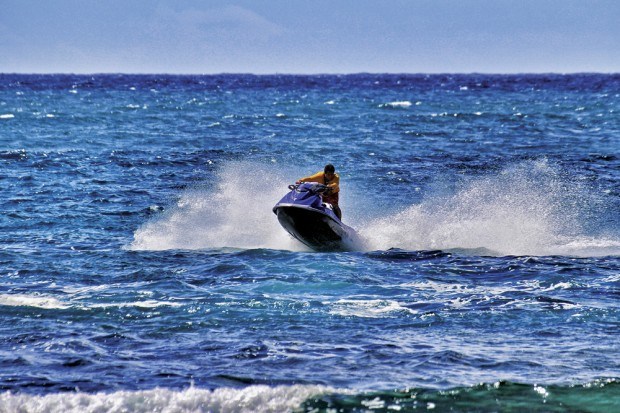This week’s piece won’t describe any specific ocean rescue.
Instead, it is a public education piece about an issue involving our professional men and women who perform these rescues, as well as many tens of thousands of annual “preventions” — safety-oriented conversations with beachgoers — and we’ll never know just which of these conversations may have saved a family.
The Kaua‘i Lifeguard Association has been lobbying hard this year for HI State Legislature Bill # SB 2967. This is a bill which, if adopted, will move lifeguards from their current HGEA Bargaining Unit 3 into a new HGEA bargaining unit. Bargaining Unit 3 has upwards of 13,000 members statewide, mostly “white-collar non-supervisors:” clerks and administrative assistants.
Some of these clerks and assistants are among the dearest and most dedicated and computer-skilled people that I know. But Hawai‘i’s 400 lifeguards’ job description does not match or mesh with the rest of Unit 3’s members, and they have therefore been unable to achieve bargaining capabilities that correspond to their duties.
To backtrack a few decades: I don’t know how many lifeguards there were in Hawai‘i in 1972, but 50 is a reasonable guess. Six on Kaua‘i —some real classic and legendary men, with the assignment of covering a few of the county’s beach Parks. HGEA was orgainizing its bargaining units, and no one knew where to put these people. Unit 3 was chosen, very arbitrarily.
Since 1972, the job complexity and demand of our lifeguards has been greatly expanded.
With the use of Jet Skis, ATVs and 911 hookups, we now ask our lifeguards to do their best covering the entire perimeter of Kaua‘i, utilizing not only high-risk ocean skills, but also first responder skills.
And they have pulled off some of the great rescues in our planet’s history.
Obviously, this challenge is easier to draw up than to perfect, since you may have as few as four minutes to get to somebody in distress before they succumb, and our system is far from perfect. We have 10 towers and 60 gorgeous white-sand beaches. Something doesn’t add up, not the least being a county budget that can’t possibly allow for 60 staffed towers. We also ask our lifeguards to be our beach ambassadors, offering important education and prevention measures to our hundreds of thousands of annual beachgoers. All the while, lifeguards are at the very bottom of the ladder of professions that are in the business of saving lives.
Our lifegaurds have accepted all these new responsibilities with great skill, willingness and courage, and many a time they have pounded their lonely way through choppy seas on a tiny rescue craft, responding to a 911-activated “swimmer in distress” miles away.
I have been blessed to meet some of the rescued and eternally grateful near-victims and their families, and there is no greater story to be told on Kaua‘i. I have also tried to count the bruises and abrasions on our lifeguards after some of these runs.
So, what does SB 2967, a bill being discussed in the chambers of the State Legislature, have to do with ocean rescues? First, it gives our lifeguards a voice and a chance to make their case for improved conditions and compensation.
I strongly believe that can only add to their professionalism and dedication. Second, it will, by incorporating incentive scales, encourage members to increase their skills and certifications — e.g. obtaining EMT certification, Coast Guard captain certifications, courses in communication skills, etc. — as with the fire and police unions. Third, let’s keep it simple: they have earned the recognition that this bill represents, and they will ride the back of that recognition into ever-greater work on and near our beaches.
The result will be more and more professionalism, motivation and professional satisfaction paired with higher and higher standards — and that, I believe, will translate to more lives and families saved.
In closing: SB 2967 has been blessed to have the strong support of Kaua‘i’s three state representatives and our state senator, as well as our mayor and county council, and it has advanced far in this year’s legislative process.
• Dr. Monty Downs is president of the Kaua‘i Lifeguard Association.


